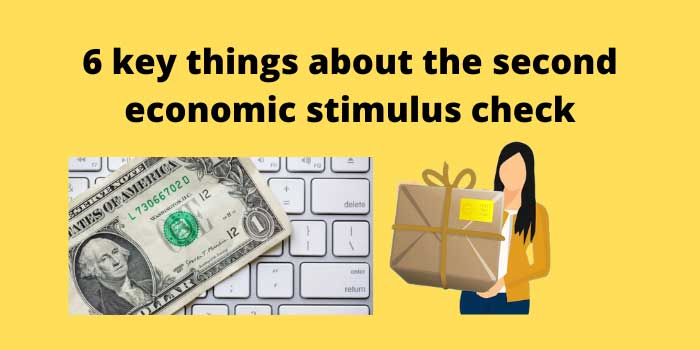In the politically charged run-up to the general election, we tell you everything you need to know about a possible second round of support for the pandemic.
Early voting for the November 3 election has already begun in some states and presidential debates are just around the corner. Health experts warn that the coronavirus pandemic could become unimaginably worse as influenza season begins. And Capitol Hill is busy with the death of Supreme Court Justice Ruth Bader Ginsburg and a possible shutdown of the government.
With so much going on at once, it may be difficult to focus on reaching a deal for the next economic stimulus check. Here are the six most important facts you should know about who would be eligible for a second check, should negotiations result in a new economic aid bill that includes a new direct payment.
Editor’s Note: This article is frequently updated with new information and is intended to provide an overview of the situation. If you are waiting for your money, you can track your check through the IRS website, we tell you what some of the reasons might be for not yet receiving your check, and you should also know that the USPS offers a free service to find out when your check will arrive.
1. A new check is wanted, but has not been approved
The economic stimulus check has bipartisan support, but it is not a done deal. Discussions about its passage have lasted more than a month and a new payment will occur if a bill is passed by Congress or if the president signs a new executive order.
This week, Federal Reserve Chairman Jerome Powell will testify before three congressional committees in a final effort to encourage more economic support before the November 3 elections. The lack of government intervention, such as the approval of another direct payment, “will begin to be reflected in economic activity. It will also be reflected in evictions and foreclosures and things that will mark and damage the economy,” said Powell, according to The Hill.
2. The IRS could send the second fastest check
It took the IRS and the Treasury Department approximately two and a half weeks to send the first round of stimulus payments to eligible recipients. Treasury Secretary Steven Mnuchin has said he could send them much faster this time, after a bill is passed.
“He could send 50 million payments very quickly” and start sending them a week after a bill is signed into law, Mnuchin said in August.
3. Eligibility could be in your favor
While we believe that a second check will largely follow the same guidelines as the first, eligibility requirements are subject to change. It may even benefit your family if a new stimulus law redefines who counts as a qualified dependent.
Other important points about eligibility:
- Your adjusted gross income, or AGI, plays a very important role.
- People who aren’t required to file taxes, either because they receive federal benefits or because they’re below the income level to file, may also get a check. So do SSDI recipients.
- In the first check, parents of children under 16 received $500 each, but the children didn’t get their own money.
4. You can estimate how much money you could receive
If you are still waiting for your first check or want to calculate an estimate of how much money you could receive with a second check, you could use our calculator. This tool does not retain your personal data in any way.
5. How the IRS sends your money matters
To get the financial aid money to you as quickly as possible, the IRS and the Department of the Treasury made direct deposits, physical checks and EIP prepaid cards. According to recent figures from the Treasury Department, this is how nearly 160 million payments were sent:
- Direct deposit: 75 percent or 120 million
- Paper check: 22 percent or 35 million
- EIP prepaid debit card: 3 percent or 4 million
The IRS continues to encourage individuals to update their information so they can receive payments directly into their bank accounts so this figure could be higher. That said, you may get your money faster by direct deposit, followed by the physical check and every last one of those is EIP prepaid cards.
6. The situation could easily get complicated
When a second round of checks arrives, some details will need to be clarified. While some situations are simple, other details about you and your dependents may not make your eligibility clear, as well as the amount you may receive and when you may receive the money. There are some complicated cases, such as
- A group of up to 9 million people still need to register to receive their first check.
- The IRS did not send the full amount for some people with dependents, but it is possible to claim the payment.
- There are also problems that could delay your check, and there is a different process for people who receive Social Security Disability Insurance.
There is much more to know about other government payments during the pandemic. Here’s what you need to know about the $300 federal unemployment benefit and the payroll tax cut.
